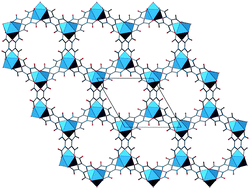Lanthanide–organic assemblies with pyrazinetetracarboxylic and benzophenone-3,3′,4,4′-tetracarboxylic acids†
Abstract
Two ligands of potentially high denticity have been used to synthesize novel lanthanide–organic

* Corresponding authors
a
CEA, IRAMIS, UMR 3299 CEA/CNRS SIS2M, LCCEf, Bât. 125, Gif-sur-Yvette, France
E-mail:
pierre.thuery@cea.fr
b
Dipartimento di Chimica and IMC-CNR, Sapienza–Università di Roma, P.le Aldo Moro 5, Roma, Italy
E-mail:
bernardo.masci@uniroma1.it
Two ligands of potentially high denticity have been used to synthesize novel lanthanide–organic

 Please wait while we load your content...
Something went wrong. Try again?
Please wait while we load your content...
Something went wrong. Try again?
P. Thuéry and B. Masci, CrystEngComm, 2010, 12, 2982 DOI: 10.1039/C002054K
To request permission to reproduce material from this article, please go to the Copyright Clearance Center request page.
If you are an author contributing to an RSC publication, you do not need to request permission provided correct acknowledgement is given.
If you are the author of this article, you do not need to request permission to reproduce figures and diagrams provided correct acknowledgement is given. If you want to reproduce the whole article in a third-party publication (excluding your thesis/dissertation for which permission is not required) please go to the Copyright Clearance Center request page.
Read more about how to correctly acknowledge RSC content.
 Fetching data from CrossRef.
Fetching data from CrossRef.
This may take some time to load.
Loading related content
